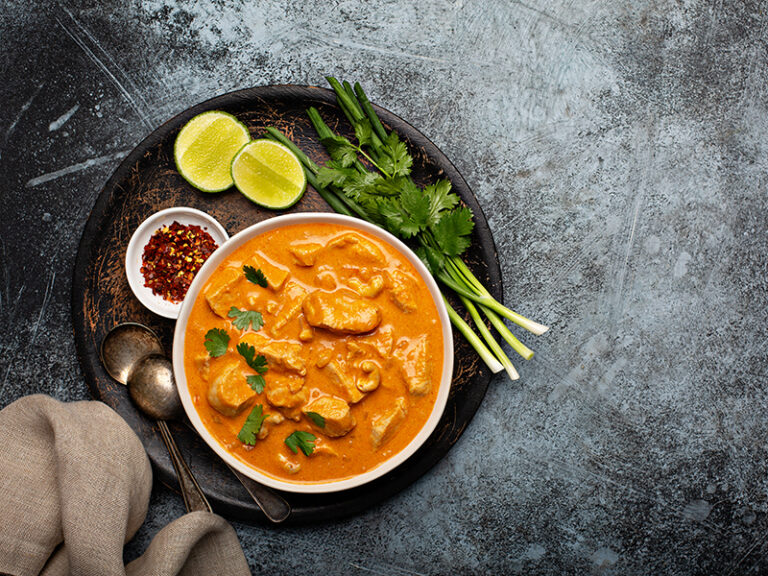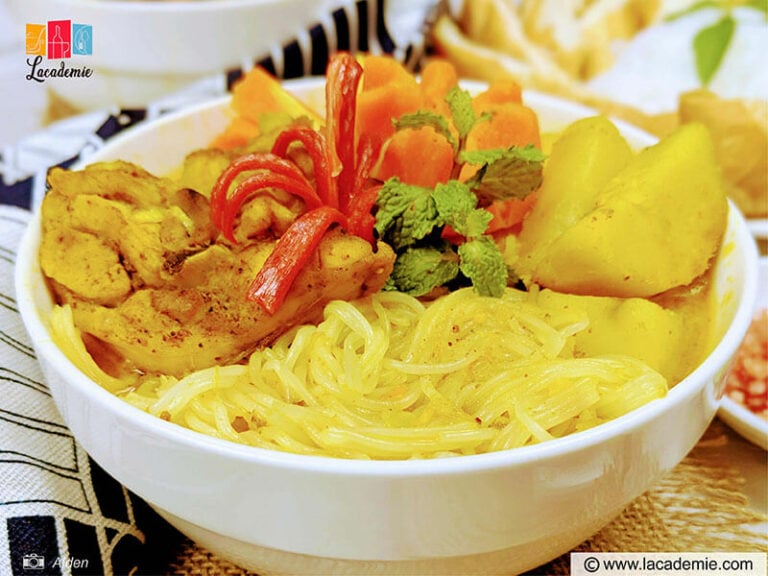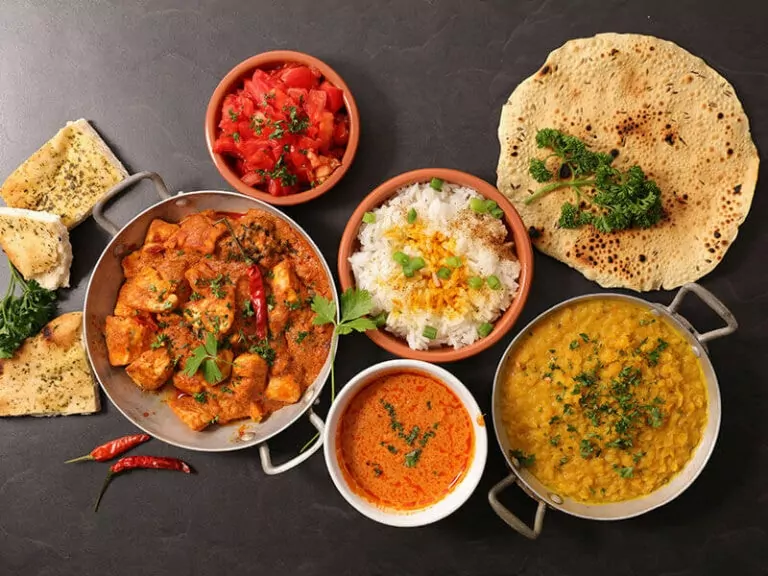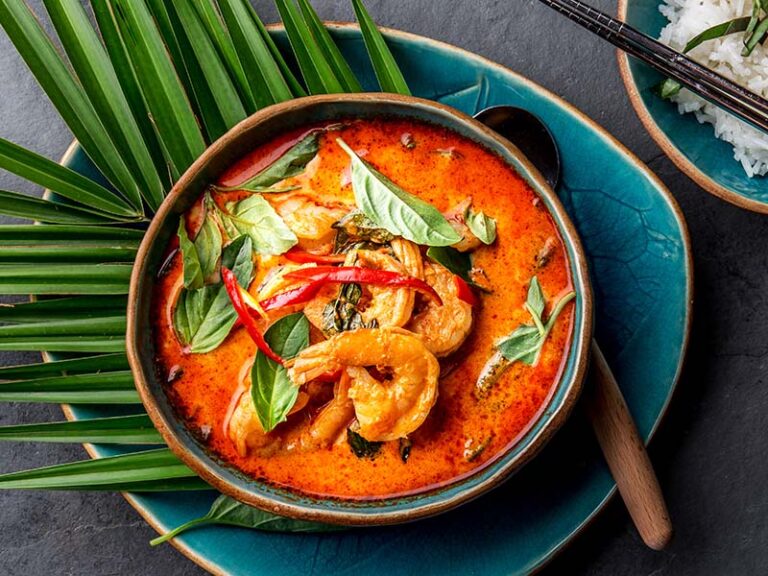You may wonder: What does curry taste like? There are many different versions of curry in the world. Depending on the taste of each locality, they have created their distinct curry flavor.
Because it is a mixture of various spices, people rumor it is hard to eat. Many people feel hesitant when invited to try this dish.
It is no coincidence that curries appear in a wide range of textures: from soups, stews and stock, and more. Please refer to this article which helps you better understand its taste and more information surrounding curry.
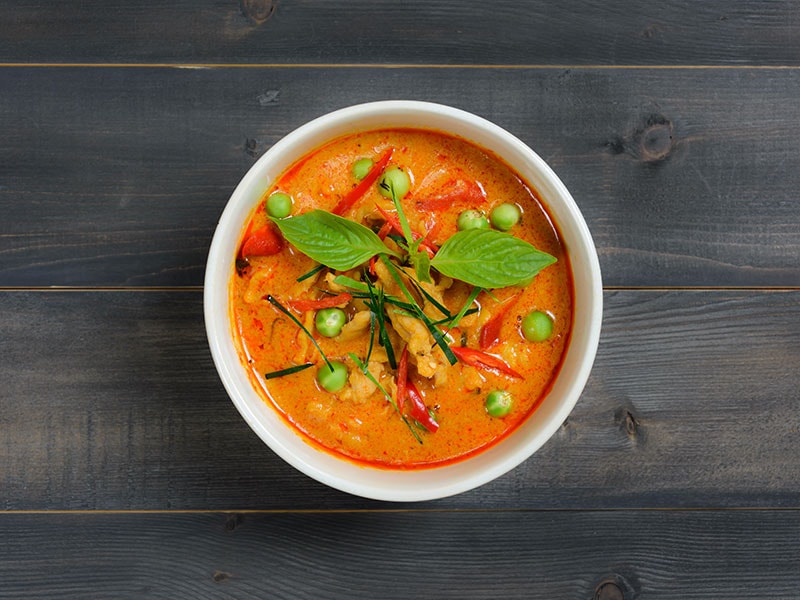
An Overview Of Curry And Where This Name Comes From
Before discovering “What is the taste of curry?”. You can take a look at its historical origins. You may be surprised by its long history.
Curry is a sauce or a kind of soup. This sauce contains ginger, turmeric, chili, pepper, and various spices. It is mainly combined with other ingredients such as meat, poultry, and seafood and may or may not have vegetables.
Curries are also available in vegetarian versions. Furthermore, some recipes add tomato sauce, coconut milk, or milk.
Regarding curry, people often think of India as the home of the dish.
According to archaeologists, at least since 2000 BC, people of the Indian subcontinent have used black pepper for their recipes. Later, ginger and turmeric also appeared in the recipe.
In 1510, thanks to the establishment of the Portuguese Trading Center in India, chilies, tomatoes, and potatoes were also transported here. These ingredients are all original ingredients to create the Indian curry of that day.
The British gave the name “curry” and used it to refer to all dishes made from the sauce. They use the name Curry after the word Kari, a Tamil word meaning sauce or enjoying eating rice. (1)
Let me help you to know why a dish originating from India makes the British people go crazy.
What Does The Curry Mainly Taste Like?
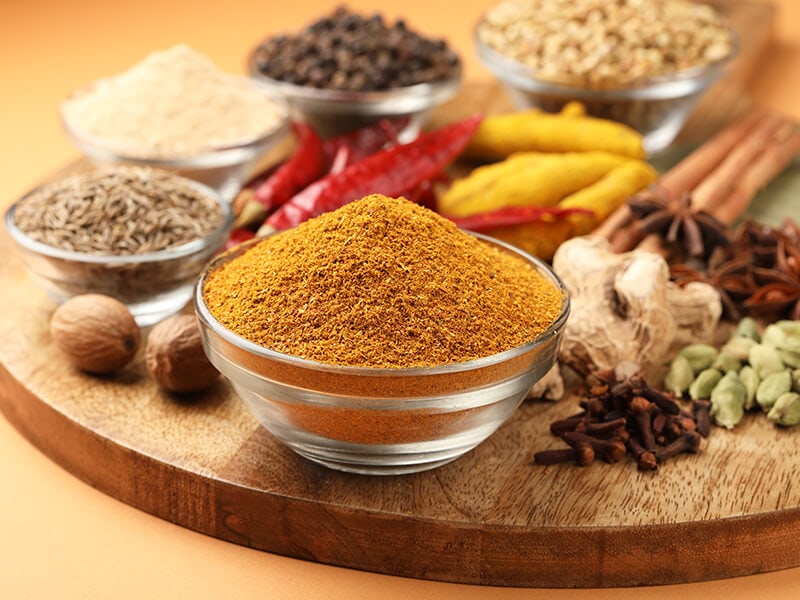
Despite many differences, curry’s main profile has a spicy, addictive taste. Curry has a unique taste due to the combination of various aromatic spices. It includes sweet and savory flavors from flowers, woods, and herbs.
First, turmeric gives the soup its signature color and profile. Turmeric has a pleasant spicy taste with a bitter aftertaste that creates a rich curry.
Its sweetness and pleasant aroma come from cinnamon cloves, cardamom, and aromatic leaves. Pair them with savory spices like dried chili, cumin, ginger, or bay leaf. These are all warm ingredients, and a mildly bitter taste creates a slightly pungent smell for it.
If European curry has little spice, in India, people can use up to 30 types to make the sauce. The flavor of curry varies depending on the types of ingredients used to make it.
Different Types Of Curry I Bet You Do Not Know
The same curry, but each country has its version with many unique variations. Curry is not only famous as a culinary feature of India but also known all over the world.
Many places have brought the curry recipe back, adding some ethnic and soil elements and making the versions become the culinary characteristics of that area. Let’s explore the “shape” of curries in different places with me!
- In England: Of all the versions, the British curry flavor is closest to the Indian curry. In their recipe, turmeric plays the most important role.
- In Japan: The taste of Japanese-style curry is quite similar to the curry in Indian cuisine. However, it gives a fresher taste because they add vegetables to the dish.
- In Southeast Asia: They add coconut milk to add another layer of flavor to the curry. Chili and garlic, combined with the aroma of coriander and dill leaves, balance the spiciness.
- In the Middle Eastern: the natives process curry in a dry form, which means there is no liquid left on the food in the pot. The meat will be completely covered by the seasoning on it.
- In South Africa: In South Africa, their recipe mandates the use of oil to enhance the fatty taste. At the same time, they also bring their traditional flavors to create innovation for a curry.
- In West India: Curries in the West Indies do not emphasize spiciness. So, those who can’t eat spicy food can try the traditional Bahamian curry with the main ingredients of ghost pepper and chicken.
With delicious taste, curry has crossed the border and come to many different countries and regions. Each place, each taste, each creation develops different products and so does the taste of curry. You can taste the entire curry-making process in that location through this distinctive flavor.
| Areas | Special point |
| England | Closest to the Indian curry, focus on turmeric |
| Japan | Quite similar to Indian curry but fresher |
| Southeast Asia | Strong local flavor by coconut milk, chili, garlic, coriander, cumin |
| Middle Eastern | Appears in dry form |
| South Africa | Emphasize their traditional taste, add oil |
| West India | Mild spicy |
How Do The Ingredients Of A Curry Affect Its Taste?
Depending on the location, climate, terrain, and available ingredients, the taste of curry has certain adjustments. No matter how different the flavors of curries in India, Japan, or Thailand are, they will still contain some of the required ingredients.
| Types of ingredient | Typical ingredients |
| Base Components Of Curry | A blend of turmeric, ginger, cumin, and coriander |
| Spices | Up to 20 spices: cumin, pepper, coriander, fenugreek, star anise, cloves, cardamom, and others |
| Fats | Oil, cream, margarine, dairy butter, or special traditional buffalo milk butter |
| Acidic Ingredients | Tomato, lemon, tamarind, or yogurt |
| Proteins | Red meat, poultry, seafood, beans, peas, tofu |
| Side dishes | Different types of vegetables, bread, chutney |
Base Components Of Curry
Almost every curry mix starts with a blend of turmeric, ginger, cumin, and coriander. It creates a pleasant spicy taste and warm smell. There will be differences when choosing different types of ingredients.
Many curry spices are available at the store with different appearances. Their taste also is not the same. To choose a suitable curry, you can scroll down to the information below.
| Types of curry ingredients | Characteristic |
| Curry paste | A thick paste made from fresh ingredients |
| Curry powder | A mixture of dry spices |
| Curry roux cube | A mixture of fat, flour, and basic curry seasonings |
Curry Paste
Essentially a thick paste made from fresh ingredients like turmeric, lemongrass, ginger, onion, etc. Furthermore, the taste of fresh spices or herbs is stronger than the dried ones.
The use of pastes is frequently seen in the recipes of the Southeast Asian region. These ingredients create a thick puree. Using this type, you can heat them with oil or butter and use coconut milk to liquidate them, becoming a sauce or soup.
Curry Powder
Although the taste may not equal the paste version, people still favor powdered curry. The mixture of dry spices is the same as the curry paste. They are used to make curry ground. It usually comes in a small package.
The advantage of this form is that you can store them for a long time (maybe 3-4 years) at room temperature. The ingredients in the powder are as sufficient as the others, but the price is lower.
You can use it as an all-purpose condiment. Any soup, fried dish, stew, or sauce for meat and salads can include curry powder. However, to enjoy the full taste, you should still use the freshly made powder as soon as possible.
Curry Roux Cube
Another form of ready-made curry is the curry roux cube. Instead of India, when referring to this version, people often mention Japanese cuisine.
Curry roux in block form similar to bouillon cube. The creators of this special edition, S&B Foods, introduced them in 1956. They are a curd mixture of fat, flour, and basic curry seasonings.
Unlike a paste or powder, this one has an umami taste, a mild sweetness, and a richer sauce. They look like thick chocolate bars sold at the store divided into individual servings. You can use it for stewed curries to optimize preparation time.
You can make a curry roux cube at home in only six minutes.
Spices
Each of your curries will taste different depending on how you choose the spices. The flavor and quality of each spice varies. You can learn more about the different curries by type and amount of spice used below.
Type Of Spices
You’re probably familiar with cumin, pepper, coriander, and fenugreek. They are spices with a mild scent and often appear in any family meal.
However, the authentic curry must have a rich and strong flavor. This uniqueness is created from a blend of star anise, cloves, cardamom, and other specialized spices. Just add or remove an ingredient, and the curry taste will more or less change.
Amount Of Spices
The taste of the curry depends on the number of ingredients you add. The correct amount of seasoning in a recipe is essential to making any dish. Technically, more than 20 different spices make up a standard curry.
You can experiment and get creative when making curry. Adding 1 to 2 tablespoons of seasoning slowly and tasting until it suits your taste is a good way to cook.
My advice is that you should only modify mild varieties such as coriander, cumin, cinnamon, or pepper to ensure the original flavor of the curry.
Fats
In addition to spices, fat is a basic rule of curry. When using fat for stir-frying, it enhances the taste and aroma significantly.
Some types of fat: such as oil, cream, margarine, dairy butter, or special traditional buffalo milk butter, are included in this dish.
Acidic Ingredients
The sourness and brightness of the curry are due to its acidic composition. You may add tomato, lemon, tamarind, or yogurt depending on your taste.
In Asia, they love the strong sour taste of tamarind and lemon. In contrast, Europe likes to have a mixture of sweet and sour, so it is common to use tomatoes or yogurt.
Proteins
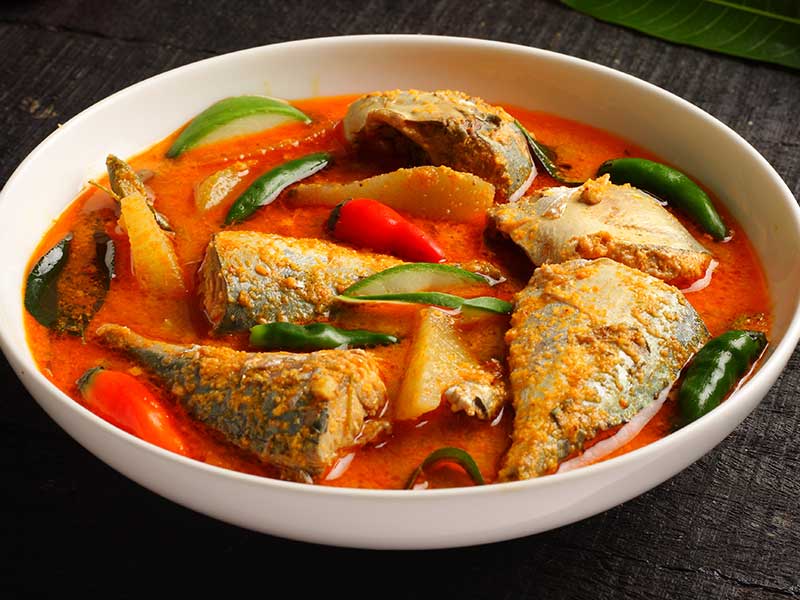
There are many different proteins that go well with curries. The most common are red meats such as beef and pork, as well as poultry such as chicken and duck. They are popular ingredients because they are simple to prepare and widely available.
If you’re a vegetarian, consider peas, tofu, or chickpeas. In addition, the curry is also modified to have regional characteristics or strange flavors, such as using goat, lamb, or seafood such as fish, shrimp, or clam.
Side Dishes
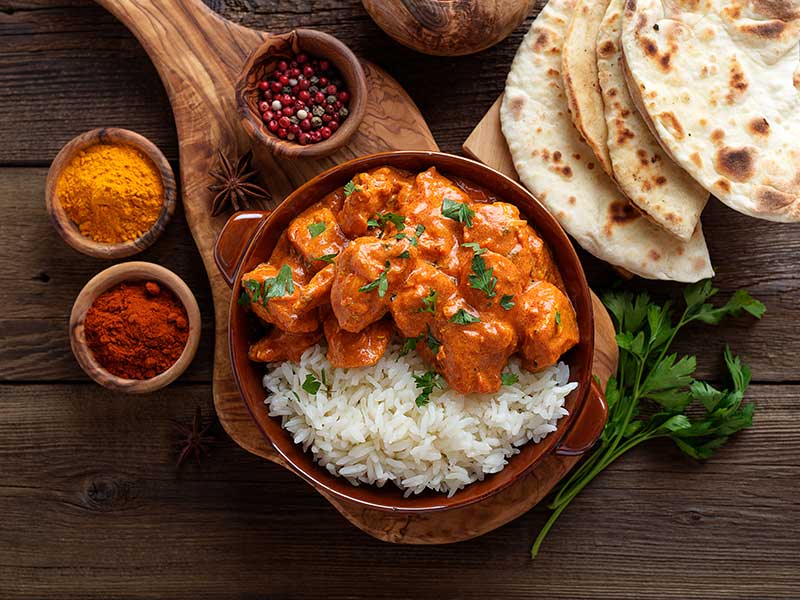
Speaking of side dishes, curries pair well with many things. The taste of curry in each culture is different, the same as they choose the accompanying food.
For more variety, you may cook vegetarian curry; try the following vegetables. The perfect ingredients for this dish include mushrooms like shiitake, King oyster mushroom, carrots, sweet potatoes, potatoes, and taro.
The best accompaniments are bread as sandwiches, baguettes, or traditional Indian bread like Naan and Thepla. In Asia, people serve it with hot rice. Another type of starch is sweet potatoes and potatoes.
In addition, if you like something sweet and crunchy, you can try Samosas made with buffalo butter and refined maida flour. If you want to increase the flavor, tomato or chili chutney is the most appropriate choice.
Nutritional Benefits For Your Health When Using Curry
Not only is it a delicious spice, but curry also surprises you with its nutritional value. The combination of spices in curry powder is a nice nutritional touch to any dish.
The spice blend is rich in anti-inflammatory compounds, and consuming it can help reduce oxidative stress, promote heart health, and improve blood sugar, among other potential benefits.
Control Blood Sugar
According to progressive research, people who include moderate amounts of curry in their daily diet have significantly lower blood sugar levels than those who don’t. In addition, the researchers also suggested that curry consumers had increased blood flow. (2)
This effect of increasing blood circulation is due to the antioxidants present in curry. Therefore, curry becomes a good supplement, especially for people at risk of atherosclerosis. (3)
Supports Digestion
The benefits of curry powder are mainly related to the individual ingredients rather than the spice blend. Curcumin in turmeric can help the body’s digestive system function properly and relieve symptoms of digestive disorders.
Curry leaves have a stimulating effect on digestion, improving digestive enzymes. They are also used to treat nausea and vomiting effectively.
Ability To Prevent Cancer
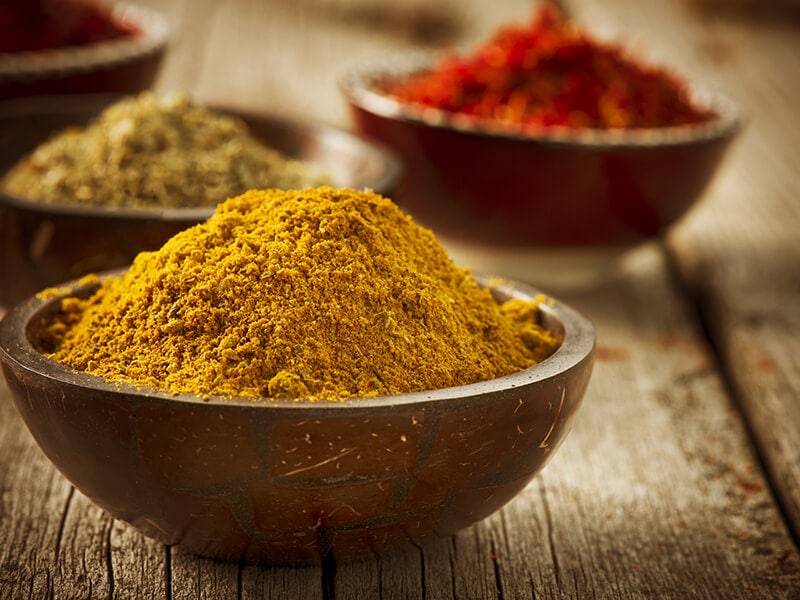
According to several studies, experts confirm that turmeric has many direct health benefits. Especially the effect on some cancer cells. Curry’s main ingredients usually contain a large amount of turmeric.
So when using curry, you can improve your cancer prevention. It destroys and inhibits the spread of cancer cells in the body. Research shows that allicin compounds in garlic strengthen the immune system, helping the body fight diseases like cancer, too.
Although it is not certain, studies on many groups of people show that people who eat a lot of raw or cooked garlic have a lower risk of colon, stomach, and esophageal cancer.
Great Tips To Help You Cooking Indian Curry
Curry allows people to adapt it to their cooking styles. Here are the secrets for you to show off your culinary skills. This recipe is not only for Indian taste, but you can apply it to any kind of curry.
Tips In Cooking
If it’s your first time cooking, here are three ways to make the curry cooking process easier. You don’t have to panic and spend too much time preparing this tasty dish.
Marinate Ingredients With Spices For Hours
Indian-style curry cannot be flavorful if ingredients such as meat and vegetables do not have enough spicy permeability. You can use ready-made seasoning packs or make your own at home and marinate them for 2-4 hours or overnight in the refrigerator.
Use Coconut Milk, Fresh Milk Butter, Or Condensed Milk
Instead of water, try using coconut water, coconut milk, milk, or butter. You’ll be able to create a rich, nutty version of the broth.
Always Cook On Low Heat
For a good curry, you need to put in a lot of time. The slow cooking method will help the cooked ingredients soften and achieve the perfect consistency.
Tips To Fix
If you mess up the recipe, the curry may have a bad taste and appearance. Try these steps to save your curry creation.
Thicken Curry Broth
You can mix cornstarch, tapioca starch, or galangal with cold water or curry sauce. Then stir it and add it to the pot. The curry sauce will thicken and become more attractive.
Keeps Curry Fresh For A Long Time
If you use fresh curry, the trouble is that it is difficult to preserve it. Put the curry in the refrigerator in the cooler. However, to keep the original flavor, you should only store it overnight for about 3 days.
Burnt Curry
Curry has quite a few ingredients which are easy to create. Cooking curry also requires patience. Just being careless will make this dish very easy to burn.
To fix it, you can put one or two peeled potatoes in the curry pot. After about 45 minutes of cooking with the curry, the potatoes absorb all the burnt flavor and the smell.
Note that you should only use medium or low heat to maximize their ability. Alternatively, you can try using a dairy ingredient like cream, yogurt, or condensed milk for a similar effect. This helps mask the burnt flavor, making the curry easier to eat.
Although the above are the secrets to help you cook a perfect curry to treat family and friends. However, these tips can help you with recipes like Japanese, Thai curry, or even other dishes.
Uncover why your curry doesn’t turn out the way you wanted with these great tips.
Some Favorite Curry Recipes You Should Add To Your Menu
Many people often think that cooking curry requires a lot of technique, time, and effort, but that is not the case. Let these curry recipes in this article help you make delicious dishes at home.
Simple Homemade Chicken Curry
This chicken curry is easy to make at home to serve your lover. The spicy flavor combines with well-marinated potatoes, chicken, and carrots in the sweet soup, which makes the curry attractive.
For fresh chicken, you should choose chicken with light yellow and thin skin. When pressed on its meat, you feel high elasticity. Good chicken has meat that should look fresh and not have a bad smell. Also, there should be no bruises or blood clots on the skin.
You can use ready-made curry spices or make your own. You pre-marinate the chicken for 1-2 hours with a few spices such as salt, sugar, monosodium glutamate, and lemongrass, and then stir-fry with a little oil. Each slide of meat is more tasteful and delicious.
This weekend, you can gather your family and make this simple chicken curry together.
Shrimp Cooked With Thai Curry
With ingredients that are easy to find and simple to make, there’s no reason you do not learn to make Thai-style shrimp curry. Contrary to Indian, Thai curry is associated with tropical ingredients, especially coconut milk.
Instead of using milk fat, Thai curries have a richer, plant-based flavor. In addition, their curries do not notice the sour taste. They prefer sweet, fatty, and spicy flavors. Other special ingredients are lemon leaves and coriander to create a different scent for this dish.
Thai versions stand out more with shrimp or fish curry recipes if most people cook curry with meat. The curry’s strong taste overwhelms the seafood’s fishy smell perfectly.
Chana Masala- Chickpea Curry For Vegetarian
The word “masala” means spice. This is a spice blend mainly found in the Punjab region of Northern India. For the most part, Garam Masala will consist of coriander, fennel, cardamom, black pepper, cinnamon, and nutmeg.
Masala is a great seasoning for chicken or beef. Therefore, it is pre-processed before added to the curry pot and creates the typical flavor of Indian curry.
The main ingredients in this dish are chickpeas, onions, tomatoes, lemons, and ginger. Vegetarians can vary with tofu, peas, or beans for a change.
Chana Masala curry is a popular vegetarian curry in India. You can serve it with Basmati, Jeera rice, or other types of naan, roti, paratha, and bhatura.
Vegan Coconut Lentil Curry
Another vegetarian curry menu worth trying is the coconut lentil curry. The richness of coconut milk, the shape of curry, and the nutty taste of lentils are worth considering when adding to the menu.
Lentils are good for health, especially for vegetarians who want to make up for the lack of protein from animal meat. In addition to being good for the heart, brain, and blood, they also help women prevent birth defects during pregnancy.
To make curry broth delicious and inviting, you add coconut milk at the end when the dish is nearly cooked. If you add coconut milk at the start, its texture will be mushy from cooking for too long.
FAQs
After reading through all the information mentioned in the article, hopefully, you have gained new knowledge and answers about the taste of curry. The frequently asked questions below give you more insight into curry flavor issues.
Enjoy The Special Taste Of Curry At Least Once In A Life
Curry is the essence of the Indian people. However, across each country, this dish is modified to match. Today, it has become not only a separate dish of India but a typical dish in many areas, especially in Asia, Europe, and South Africa.
After reading this article, I hope you have given yourself the correct answer to the taste of curry. Perhaps, it provides a lot of information, but it is impossible to describe its uniqueness.
By the way, please leave a comment below and share this article. Maybe you can find a companion who also wants to try the taste of this dish. Or don’t be afraid to apply the recipes above to treat everyone to curry.
References
- Wikipedia contributors. (2001b, September 30). Curry. Wikipedia. Retrieved September 9, 2022,
- Cambridge, E. (2022, April 8). Type 2 Diabetes: Common curry ingredient ‘significantly’ lowers high blood sugar. . . The Sun. Retrieved September 9, 2022,
- NCBI – WWW Error Blocked Diagnostic. (n.d.-a). Retrieved September 9, 2022,
- BBC News | E-CYCLOPEDIA | Chicken tikka masala: Spice and easy does it. (n.d.). Retrieved September 9, 2022,

